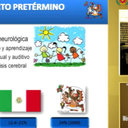Association between selected structural defects and chromosomal abnormalities.
الكلمات الدالة
نبذة مختصرة
OBJECTIVE
To determine the association between some major structural abnormalities detected prenatally by ultrasound and chromosomal abnormalities.
METHODS
The present study was a retrolective, transversal study. We analyzed case records of patients during the fetal follow-up at the Department of Maternal Fetal Medicine from January 1994 to May 2010 to identify fetal patients with a diagnosis of holoprosencephaly, diaphragmatic hernia, omphalocele, cystic hygroma, hydrops and cardiac defects. We analyzed patients who had a prenatal invasive diagnosis procedure to obtain the odds ratio (OR) for some major isolated anomalies and their different combinations with respect to chromosomal abnormalities.
RESULTS
We examined 280 patients with ultrasonographic markers for chromosomal alteration, 197 met inclusion criteria, from which 88 had chromosomal abnormalities. The most frequent diagnosis was trisomy 18 (31.8%), which was followed by trisomy 21 (21.6%), trisomy 13 (21.6%), Turner syndrome (monosomy X) (14.8%) and other chromosomal abnormalities (10.2%). Among the fetuses with nonisolated holoprosencephaly, we obtained an OR of 4.9 95% CI (0.99-24.2) for aneuploidy. Associated omphalocele had an OR of 7.63 95% CI (2.07-46.75), p < 0.01. Interestingly, 62% of aneuploidy cases had associated cardiac defects [OR = 7.7 95% CI (1.4-41.7)]. In addition, associated cystic hygroma had an OR of 2.5 95% CI (0.59-10.91). Heart defects were the most common defects in fetuses with trisomy 18 (57.1%), when they were associated with facial cleft, we had an OR of 11.08 95% CI (2.99-41.11), p < 0.0001. Statistical potency was calculated for each analyzed defect and it was over 80% for all of them but diaphragmatic hernia.
CONCLUSIONS
The association of 2 or more structural defects increased the probability of a fetus to be a carrier of a chromosomal disorder; however this was not statistically significative except for associated omphalocele. Heart defects showed the greatest association with all chromosomal abnormalities. The most important association was among heart defect, facial cleft and trisomy 13.



